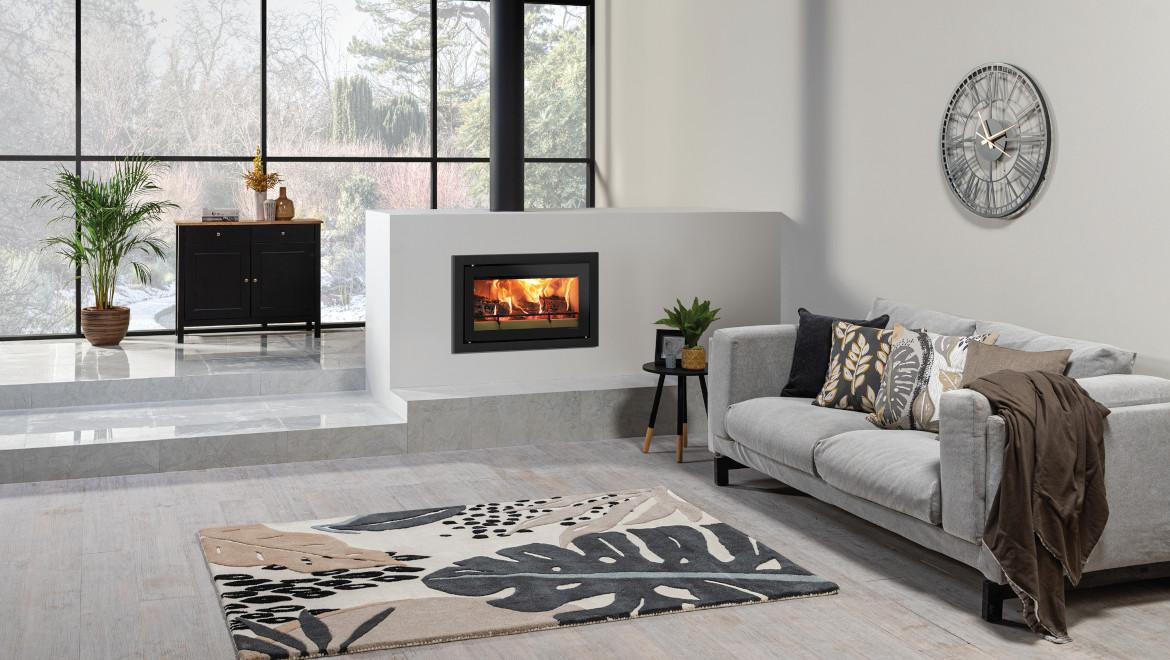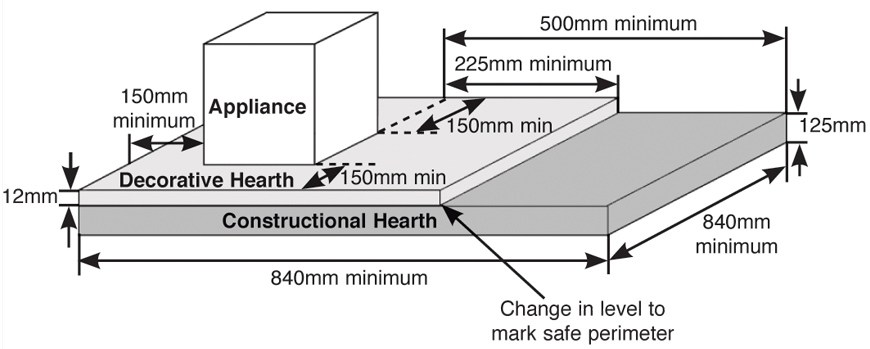
When planning your dream home, selecting the perfect heating solution is crucial. It's not just about warming your space; it's about enhancing your home's aesthetic and working in harmony with any existing heating systems. This comprehensive guide will help you navigate the essential factors in choosing the most suitable stove or fire that meets your unique needs.
Table of Contents:
Solid Fuel Options:
Gas and Electric Alternatives
You’ll come across the term Ecodesign when you’re researching a stove or fire for your self-build home or renovation. Ecodesign standards focus on efficiency and environmental targets. These regulations ensure reduced emissions from heating appliances, making them a responsible choice for eco-conscious homeowners.
For example, many electric fires will now have intelligent control features to minimise wasted energy such as programmable timer controls or thermostatic handsets. On the other hand, since 2022, wood burners and multi-fuel stoves have had to adhere to limits on particulate matter (PM), nitrogen oxides (NOx), organic gaseous compounds (OGCS) and carbon monoxide (CO) – these are all rigidly measured to lower emissions and improve air quality. Read all about log burner rules on our useful guide.
Your choice should reflect your personal style and complement your home’s design. Whether you prefer a traditional look or a contemporary setup, there’s a range of options, from sleek inset fires to classic stoves, to fit your aesthetic.
Stoves can be freestanding wherever you have a chimney system. This allows them to be installed in front of a wall, in the centre or corner a room with an exposed flue pipe, or installed within an inglenook. Some log burners can even be wall-mounted!
Inset fires are set into a wall or existing chimney breast, providing an integrated look. Some are designed specifically with proportions for renovating existing fireplace features, whilst others experiment with sizing and frames for a contemporary twist.
Whichever option you go for, designs vary hugely – from ultra-modern built-in landscape fires with glossy framing options, to cylindrical freestanding stoves for Nordic style, to traditional British heritage design that brings period character.
In urban areas, Smoke Control regulations may apply. Look for DEFRA-exempt products if you wish to burn wood in these areas and always check local guidelines. Alternatively, you can burn smokeless fuels in these zones.
The type of chimney system you choose depends on your fuel choice. Solid fuel and conventional flue gas stoves and fires all require a chimney. There are solutions for homes without existing chimneys, including pre-fabricated systems and balanced flue gas stoves.
If solid fuel or gas appliances are not an option for your plans, an electric fireplace is suitable for all homes without a chimney, simply plugging into a standard mains socket to function.
Consider the ease of use and control options when choosing a log burner. Gas and electric fireplaces often come with remote controls or app connectivity, while solid fuel appliances offer a more hands-on experience that may suit your lifestyle!
Some log burners, like most in the Stovax Riva2 range, can heat multiple rooms, offering greater flexibility and efficiency in home heating. For these fires, a warm air ducting kit that includes two three-metre lengths of flexible ducting can be fitted to the two ports on the fire, providing heat for additional rooms.
Your retailer will assess what your ventilation requirements are for your property. When it comes to solid fuel products, in relatively airtight properties such as new builds, there must be an air vent permanently open to the outside. Some solid fuel appliances have the option of an Outside Air Kit that ducts the air from outside directly to the appliance, without the need for an open vent into the room. Some of these are integrated into the appliance – thanks to their built-in air connection, all these stoves need to take combustion air from outside your property is to be connected to an external air pipe, making these wood burners room sealed.
The same air ventilation rules apply to gas fires and stoves, but your local expert retailer will be able to advise you on what is best for your home. Of course, a balanced flue gas fire or stove does not require additional ventilations as it completely sealed from the room and vents directly through an outside wall.
Wood burning stoves and fires need a 125mm constructional hearth – but some are specifically designed for a shallower 12mm hearth only. This negates the need for a typical hearth, which expands installation options and opens the opportunity to use materials such as tempered glass, saving on expense, complexity, and time when it comes to installation.
A diagram illustrating both constructional and superimposed (decorative) hearths.
When choosing and installing a log burner, whether gas, electric or solid fuel, it is important to consider where the product is to be fitted and the distance to walls and other surfaces. Your solid fuel or gas stove or fire must be a minimum distance from combustible materials. Each stove’s distance to combustibles varies depending on design, but your installer will be able to advise depending on the stove you choose.
As for electric products, these can be installed almost anywhere in the home. Some can just be hung on a wall or placed in a corner, but we think an electric fire is best placed in the middle of the room. Here, it can be positioned safely away from windows or doors, and we always advise to ensure the product is not at risk of leaks of water onto the appliance. This allows both a safe installation and the maximum efficiency from the heater to circulate the warm air around the environment.
When the heating system of a house is correctly designed, it assumes a minimum external temperature (depending on where in the UK you live). As an example, here in the South West where our Stovax & Gazco HQ is based, the area has a minimum design temperature of -1.5oC, or -2oC for a new build and an internal temperature relative to each room.
More and more, there are days in the winter where the external temperature drops considerably more than this, which may see the household needing additional heat in the room to achieve desired comfort. Whether central heating, underfloor or heat pump, all of these can sometimes need support because they are designed to assume a minimum temperature – when there is a cold snap, like those seen in recent years where the temperature has dropped to -10oC, these systems can struggle to cope or boost for localised heat. Here, a stove or fire becomes invaluable especially when it comes to solid fuel, offering heat in that room when you want it.
Always have your stove or fire installed by a certified professional to ensure safety and compliance with regulations. Your best option is for your retailer to organise a registered installer to carry out the entire installation. Using an accredited fitter means that the final installation will comply with all requirements of the Building Regulations.
Sign up to our newsletter and receive the latest news and updates, including product launches, offers and promotions, exclusive giveaways and competitions, as well as seasonal tips and advice.
Subscribe Now!
Leave a Reply